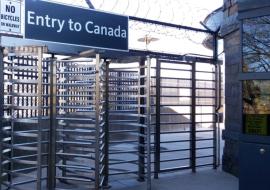Exploring Chernobyl: Debunking Myths and Understanding Safety for Tourists

The mention of Chernobyl often conjures images of desolation and danger, stemming from the catastrophic nuclear disaster of 1986. However, in recent years, Chernobyl has emerged as a tourist destination, attracting adventurous travelers eager to explore its hauntingly beautiful landscapes and learn about its tragic history.
But how safe is it for tourists to visit Chernobyl? Let's delve into the facts and debunk the myths surrounding this intriguing destination.
Understanding the Risks
Before delving into the safety measures in place, it's crucial to understand the risks associated with visiting Chernobyl. The area is still contaminated with radioactive particles, primarily concentrated in the reactor's vicinity and certain hotspots. Exposure to high levels of radiation can be harmful, potentially leading to health issues such as radiation sickness and an increased risk of cancer.
Safety Measures in Place
Despite the lingering radiation, visiting Chernobyl is generally considered safe for tourists, provided certain precautions are taken. Ukrainian authorities closely monitor radiation levels in the exclusion zone and enforce strict safety regulations for visitors. Tourists are accompanied by licensed guides who ensure that they stay within safe areas and follow safety protocols at all times.
Radiation Levels
Contrary to popular belief, radiation levels in most parts of the exclusion zone are relatively low and pose minimal risk to visitors. The majority of tourist areas have been deemed safe for short-term visits, with radiation levels comparable to those encountered during a transatlantic flight or a dental X-ray. However, certain restricted areas, such as the vicinity of the reactor and the Red Forest, have higher radiation levels and are off-limits to tourists.
Duration of Exposure
One of the key factors in assessing radiation risk is the duration of exposure. Tourist visits to Chernobyl typically last for a few hours to a day, during which visitors are exposed to relatively low levels of radiation. The cumulative dose received during these short visits is considered negligible and does not pose a significant health risk.
Protective Measures
To further minimize exposure to radiation, tourists are required to adhere to certain protective measures while visiting Chernobyl. These may include wearing long sleeves and trousers, closed-toe shoes, and avoiding direct contact with contaminated surfaces. Additionally, visitors are prohibited from consuming food or drinks, smoking, or touching plants within the exclusion zone.
Health Precautions
While the risk of radiation exposure during a Chernobyl tour is low, it's essential for visitors to exercise caution and prioritize their health and safety. Tourists with pre-existing health conditions, pregnant women, and children are advised to consult with a medical professional before visiting Chernobyl. Additionally, it's recommended to purchase travel insurance that covers medical emergencies and evacuation, just as a precautionary measure.
Conclusion
In conclusion, visiting Chernobyl can be a safe and fascinating experience for tourists, provided they follow safety guidelines and exercise caution. With proper planning and guidance from licensed tour operators, visitors can explore this unique destination while learning about its tragic history and ongoing recovery efforts.
By debunking myths and understanding the realities of radiation risk, tourists can embark on a meaningful journey to Chernobyl with peace of mind and a greater appreciation for the resilience of the human spirit in the face of adversity.














